On Turbulent Grounds – Archaeology and 725 Years of Shrines in Remete
Exhibition concept: Boris Mašić
Exhibition design: Lana Kovačić, Željko Kovačić
Multimedia: VEKTRA/GEO3D, Varaždin; Baština d.o.o., Zagreb
Poster and catalogue design: Boris Mašić, Vanja Zadravec Smetko
 It is rare that an archaeologist is lucky enough to come across foundations of two churches on one site, but when there is also a graveyard and a whole range of civil structures there, such an excavation becomes a project requiring several years of extensive analysis and processing of these finds. However, it is the explorer’s task, from time to time, to make these results public. This is why information about the archaeological finds from the site near the Church of the Blessed Virgin Mary in Remete, excavated from 2007 to 2009 on the initiative of the City Institute for the Protection of Cultural Monuments and Nature in Zagreb, has been continuously published in both Croatian and international professional and scientific journals and other publications and electronic media. It has also been included in two doctoral dissertations.
It is rare that an archaeologist is lucky enough to come across foundations of two churches on one site, but when there is also a graveyard and a whole range of civil structures there, such an excavation becomes a project requiring several years of extensive analysis and processing of these finds. However, it is the explorer’s task, from time to time, to make these results public. This is why information about the archaeological finds from the site near the Church of the Blessed Virgin Mary in Remete, excavated from 2007 to 2009 on the initiative of the City Institute for the Protection of Cultural Monuments and Nature in Zagreb, has been continuously published in both Croatian and international professional and scientific journals and other publications and electronic media. It has also been included in two doctoral dissertations.
2013 sees the celebration of the 725th anniversary of the first recording instance of the Pauline Monastery in Remete in historical written sources which has led the Zagreb City Museum to set up an exhibition entitled On Turbulent Grounds – Archaeology and 725 Years of Shrines in Remete.
The primary medium of museum communication has enabled us to use highly diversified material when it comes to chronology, content and substance and create a story which began in 1288 and ends with this year’s celebration of the Assumption of Blessed Virgin Mary in the Shrine and is inexorably linked to the spiritual life of the inhabitants living in the area of modern day Zagreb from the second half of the 13th century until today.
The exhibition, whose visual design has been authored by Lana and Željko Kovačić, is set within the exhibition area partially bordered with the ‘Priest's Tower’ wall whose construction in mid 13th century corresponds to the period of establishment of the Pauline Monastery in Remete. The exhibition is divided into three units. The first is an introduction about the Pauline Order, which had a huge impact on the social and cultural life of this part of Europe from its beginning in the 13th century to the dissolution of the Order by the Decree of the Holy Roman Emperor Josip II in 1786. The exhibits represent a symbolic connection with the Pauline Order: I. K. Ranger’s oil on canvas ‘St. Paul the Hermit’, oil on canvas by unknown author ‘Remete’s Mother of God’ and a tombstone with the Pauline coat of arms. The introduction also presents manuscripts and printed editions from 17th and 18th centuries and a study by Kamilo Dočkal, the Zagreb Chapter canon, dating from mid 20th century, which analysed the history of the Remete Monastery but was never published despite being of valuable importance for an exploration of Pauline Order history in these areas. These are all written works which the researchers used to draw knowledge on the history of the Pauline Order and the Remete Monastery. Among them is the ‘gift of land’, the first record of the Remete Monastery written on parchment on 30th September 1288, where we can read that Miroslav, the son of Herčuk, donated lands to the Monastery and the 18th century portrait that depicts him as the Pauline Order imagined him when they ordered portraits of their mecenas.
In its central part, covering the topics such as On Troubled Grounds, On Target of the Ottomans and At the End of Life Cycle, the exhibition uses archaeological findings and documentation together with multimedia projections to present the persistence of the Pauline Order to remain in Remete, despite their churches being destroyed in only one hundred years due to landslides. Among the findings there are also golden coins bearing evidence that the Croatian-Hungarian King Mathias Corvinus might have helped the Shrine in 1485 to build the tower and the defence wall around the Monastery. Small pilgrim medals from pilgrimage destinations in 17th and 18th centuries were found next to those buried next to the church show they visited these destinations whilst alive. The presentation also includes the project of arranging of the area located along the south facade of the church, designed by the architect Željko Kovačić, whose one part is currently being constructed.
The exhibition closes with the contemplative topic and with an area of the gallery which has been arranged with Baroque reliquaries, the Pauline Songbook from the 17th century, enlarged images of miraculous effects of intercessions made by Remete’s Mother of God, found in the work of Andrija Eggerer printed in 17th century, that virtualises a sacral area.
Items have been loaned to the exhibition from several heritage institutions and our acknowledgments go to them, because without them it would not have been possible to create a cultural image of the Monastery and the church which were so closely connected to the lives of modern day and historical inhabitants of the Zagreb area.
Special thanks go to today’s users and guardians of the Monastery and the Shrine, the Carmelite Order, because without their wholehearted support, hospitality and patience, archaeological excavations and this exhibition could not have been made possible.
Boris Mašić
Pictures from the exhibition
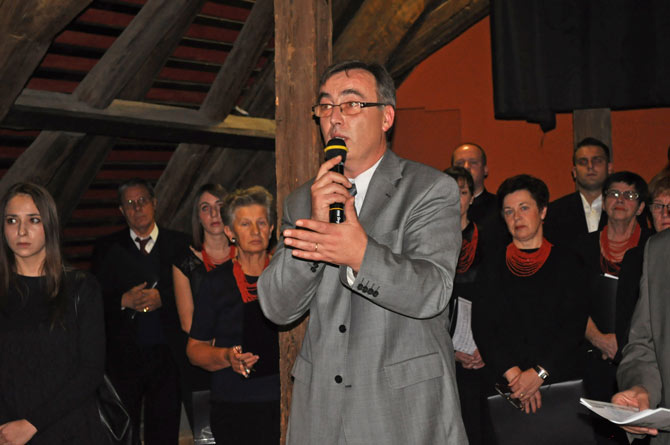



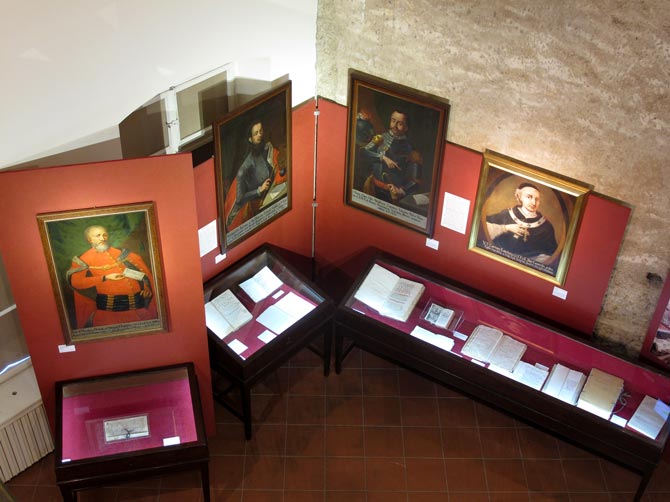
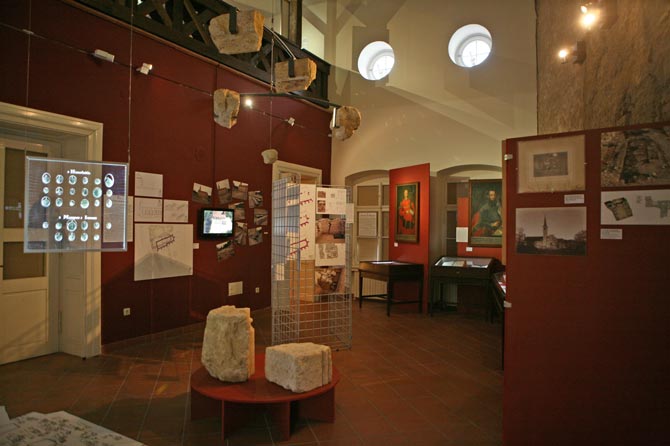
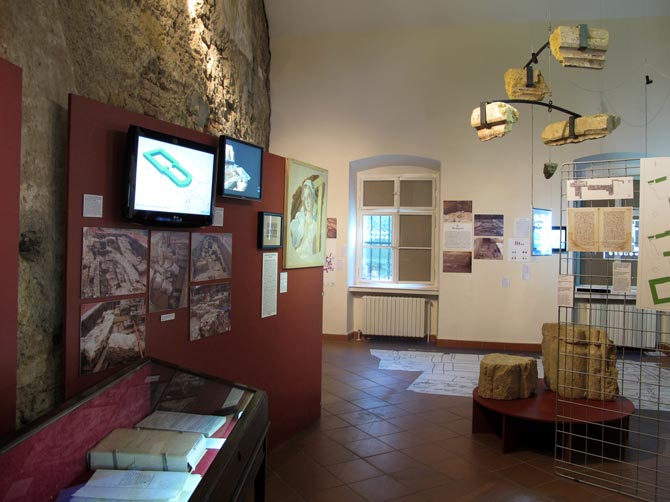



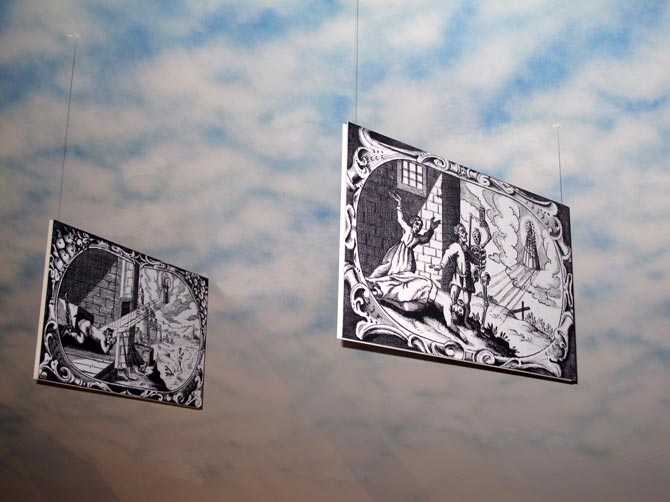
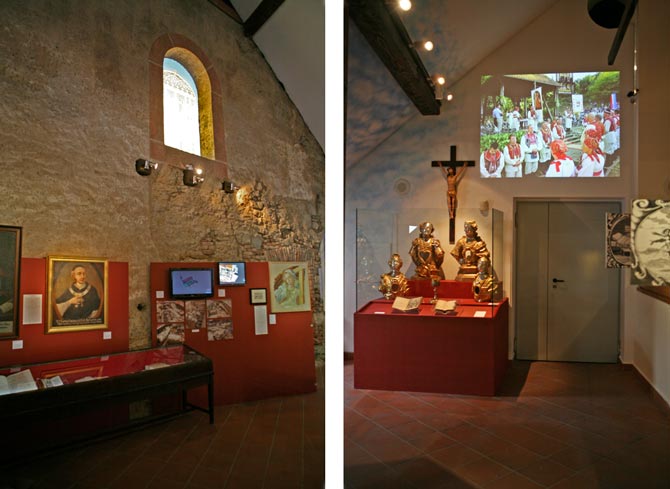
photo Miljenko Gregl, Tihomir Stančec, ZCM
 Exhibition catalogue
Exhibition catalogue
Na nemirnim temeljima : Arheologija i 725 godina svetišta u Remetama = Auf unruhigen Funamenten : die Archäology und Jahre Sanktuarium Remete.
Zagreb : Zagreb City Museum, 2013

